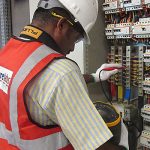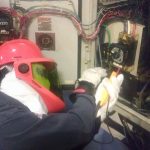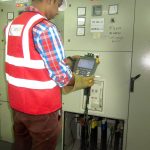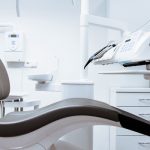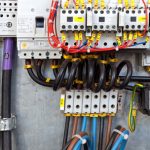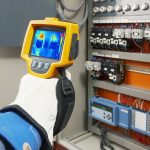
Infrared thermography is an advanced precautionary maintenance program for Electrical System. Thermography is ideal to see beyond what is visible to the naked eye.
Carelabs offers thermography scan of all electrical systems to identify too hot or too cold areas. The primary application for infrared thermography is electrical applications. Thermal imaging is the method utilised for detecting and visualizing the electrical faults.
Why is Thermographic Testing of Electrical Equipment Important?
An electrical equipment is made up of complex electrical components. As these electrical components start to age their performance may start to deteriorate and, consequently, may display elevated temperatures which, if left undetected, may result in a catastrophic fire event. Most fires in UAE are an outcome of this negligence.
Further, as an electrical system is altered, updated and undergoes inspection & testing, another defects manifest which include:
- Connection issues
- Overloading
- Misbalancing
Utilising state of-the-art thermal imaging equipment you can determine whether temperatures of electrical components are
- Healthy
- Deteriorating
- At dangerous levels
Not only is it an effective method of detecting potential issues, it also serves to minimise any catastrophic electrical accidents.
Ultimately, an electrical thermographic survey is all about bringing peace of mind to those responsible for the health and safety of your organisation.
Benefits of Thermography Testing of Electrical Equipment
- Prevent electrical failures before they happen
- It’s cheaper to make any repairs before they reach the point of no return
- You’ll use less energy
- No unexpected downtime (Normal business hours maintained)
- Your electrical system will last longer
- Your electrical service won’t face any interruption during the inspection
- Reduced Risk Factors
- Safer Work Environment
What is Done During Thermographic Testing of Electrical Equipment?
The NFPA found out that 10% of the fires happening in properties are associated to electrical system failures, like failure of terminals, electrical insulation and related components. Article 130 of NFPA 70E, Standard for Electrical Safety in the Workplace, provides details on the level of protection required based on the arc flash potential present. Published by the NFPA, NFPA 70B, Recommended Practice for Electrical Equipment Maintenance, offers a listing of equipment testing and maintenance intervals in Annex L.
Normal wear, vibration, chemical contamination, corrosion, fatigue, expansion and contraction associated with load and temperature changes and faulty assembly or installation may lower the conductivity or increase the resistance level of a connection or component. This increase in resistance will result in elevated temperatures of the electrical connection or mechanical component. These conditions often cannot be detected by the naked eye. Excessive heat and temperature rise can be readily measured and noted by an infrared camera. Increased temperatures indicate potential trouble spots that could lead to failure of the component. Any deficiencies noted should be rectified immediately by a qualified electrician or mechanic.
A company may perform thermographic inspections in-house or hire a consultant. Because thermographic imaging equipment is complex, persons performing evaluations require special training. In addition, there is a potential for exposure to “live” electrical components.
Few of the Equipment that require Thermographic Testing are as Follows
- Step-up or step-down power transformers onsite.
- Power transfer circuits, such as switchgears and relays.
- Modifications to electrical panels, power control boxes, and sub-panels.
- Buildings with aluminum wiring.
- Motor starter circuits.
- High torque and heavy current draw motors.
- Presence of equipment like mercury vapor lamps which are high output lighting equipment.
- Use of uninterruptible power supplies.
Infrared Thermography testing, commonly known as infrared scan, is an ideal technique for inspecting equipment for defective components or connections. Vibration, normal wear, corrosion, chemical contamination, expansion, fatigue and contraction associated with temperature and load variations and faulty assembly or installation may reduce the conductivity or boost the resistance level of a component. This increase in resistance will result in elevated temperatures of the electrical connection or mechanical component. These conditions often cannot be detected by the naked eye. Excessive heat can be readily noted and the temperature rise measured by an infrared camera. Increased temperatures indicate potential trouble spots that could lead to failure of the component. Any deficiencies noted should be rectified immediately by a qualified electrician or mechanic.
How is Thermography Testing in Electrical Equipment Performed?
The infrared camera or thermogram is an important component to help maintain a viable and safe manufacturing operation. Infrared thermography can be a maintenance tool in many ways and there is no substitute to its accuracy, safety or reliability.
- Prepare a plan and advise key personnel of the testing date and time to avoid any delays. The plan should include a general route outlining a starting point and progressing through the facility in an efficient manner. The goal is to prevent or minimize backtracking which will delay progress.
- Ensure a brief general meeting takes place beforehand to discuss the scope of the inspection and communicate all company safety requirements.
- Often, it’s required that the facility provide an electrical engineer or electrical engineer assistant who has good knowledge of the electrical distribution system. This person should be qualified in all company safety procedures and have experience in opening electrical cabinets or removing covers of the equipment to be inspected. Testing of mechanical equipment does not require an electrician; however, someone knowledgeable with the equipment and maintenance history is preferable.
- All equipment to be inspected must be under normal load and ready for inspection. Please note of any door switches with no override and alert personnel to ensure no accidental interruption of equipment operation occurs. Any door switches which cannot be bypassed must be outlined as part of the inspection plan.
- After testing is conducted, ensure an exit meeting takes place and discuss any critical recommendations which should be addressed immediately. At times a critical condition may exit that cannot wait until report is generated. Post Inspection
- Once report is submitted discuss findings with key personnel and develop a plan to address all recommendations or important items outlined in the report.
- Any questions concerning any portion of the report must be thoroughly discuss with company who performed the inspection to ensure no unnecessary work or repairs are perform and to ensure recommendations are satisfactorily completed.
- Document all work performed, repairs and/or replacement and archive in a secure location. Often the report provided by the company will include an area to document the steps taken to complete the recommendation, date completed, who performed the work and signature.

